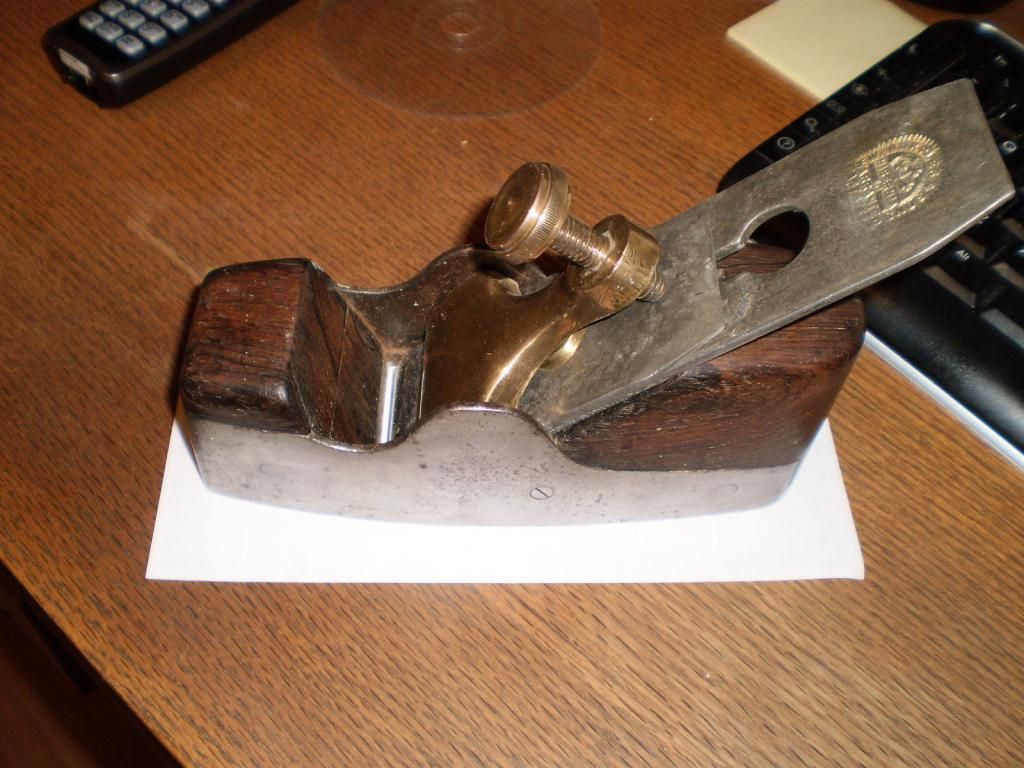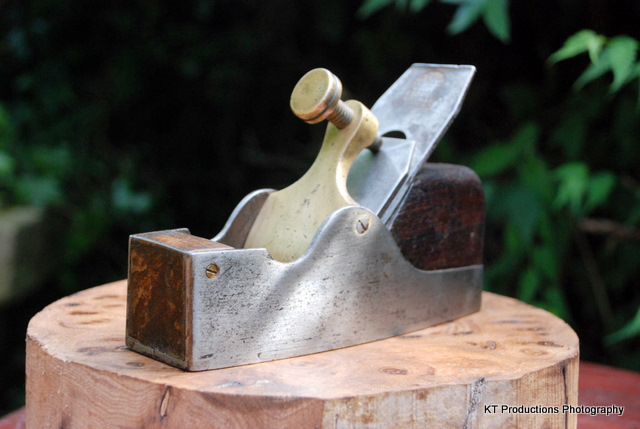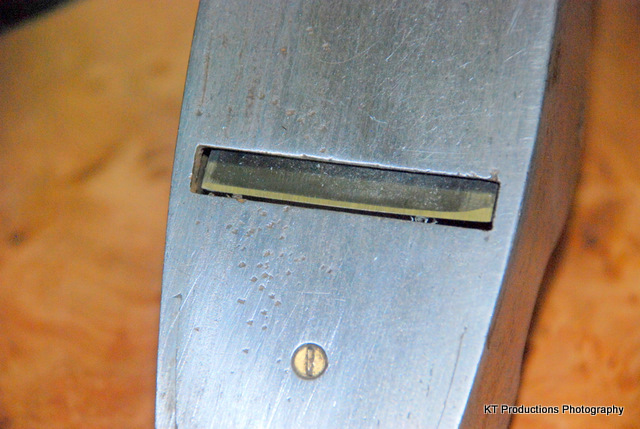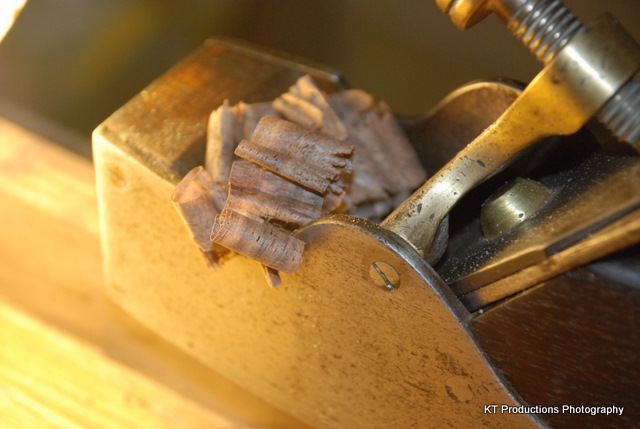Jack in Nepean
Established Member
I seldom post on this forum, since the breadth and depth of knowledge here is tremendous - far exceeding my limited knowledge. I have learned a lot herein and it is with jimi's indirect encouragement, I bit the bullet yesterday.
Having used a Sauer and Steiner coffin infill a few years ago (it was the start of that famous slope) I have lusted after one of Konrad's planes. Not having won the lottery lately, S&S are still out of the picture. I heard about a local tool collector and dealer and spoke to him on the weekend. Monday, I met with him in his Aladdin's cave of wonders and came home with this:
"http://s797.beta.photobucket.com/user/jackinnepean/media/Coffininfill_zps5797c8a7.jpg.html"
No name, est. 1860-1880, marples warranted cast steel hibernia blade (unlikely original), dovetailed, wt.3lb 6 oz/1.54kg./length 6 7/8 in./ 175 mm. Infill is Brazilian rosewood according to the seller (known to be reliable). It has been well cared for, with some rust pitting but nothing serious. Sole was flat (less than 5 min. on surface plate to remove ink markings). A bit more than I had planned on spending (heard that before?) but I think worth it.
I hope the picture link comes through. Thanks for looking
Jack
Having used a Sauer and Steiner coffin infill a few years ago (it was the start of that famous slope) I have lusted after one of Konrad's planes. Not having won the lottery lately, S&S are still out of the picture. I heard about a local tool collector and dealer and spoke to him on the weekend. Monday, I met with him in his Aladdin's cave of wonders and came home with this:
"http://s797.beta.photobucket.com/user/jackinnepean/media/Coffininfill_zps5797c8a7.jpg.html"
No name, est. 1860-1880, marples warranted cast steel hibernia blade (unlikely original), dovetailed, wt.3lb 6 oz/1.54kg./length 6 7/8 in./ 175 mm. Infill is Brazilian rosewood according to the seller (known to be reliable). It has been well cared for, with some rust pitting but nothing serious. Sole was flat (less than 5 min. on surface plate to remove ink markings). A bit more than I had planned on spending (heard that before?) but I think worth it.
I hope the picture link comes through. Thanks for looking
Jack








